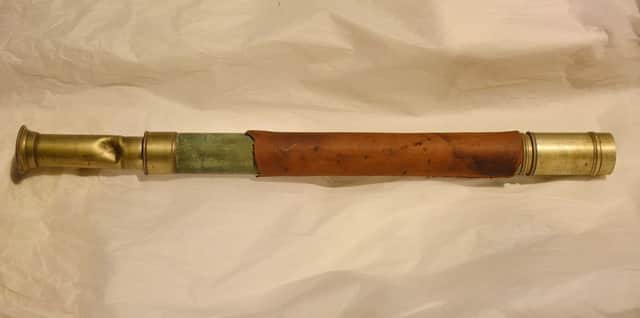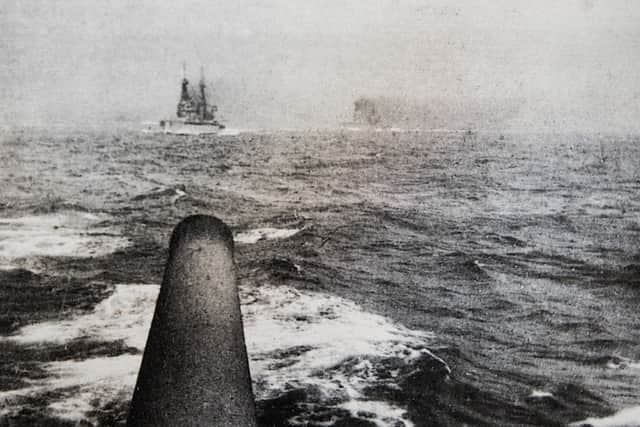Lifesaving Battle of Jutland telescope to go on display


Nearly 9,000 lives were lost in the 1916 battle in the North Sea which lasted just 36 hours but helped change the course of the First World War.
A major exhibition is being launched on Thursday at the National Museum of the Royal Navy (NMRN) at Portsmouth Historic Dockyard to commemorate the battle.
Advertisement
Hide AdAdvertisement
Hide AdAmong the survivors was Lieutenant Rhoderick McGrigor who served aboard the battleship HMS Malaya during the Battle of Jutland.


He went on to become First Sea Lord and to attain the highest rank in the Royal Navy in 1953, following on from the Duke of Edinburgh to achieve the title Admiral of the Fleet.
His adopted son, Jock McGrigor, has loaned to the NMRN the personal telescope of his father, which was damaged by a piece of shrapnel, as he carried it under his arm aboard the Malaya.
The dent caused by the shrapnel can be seen in the telescope alongside where McGrigor had engraved his name in it.


The 73-year-old retired lieutenant commander said: “He was carrying his telescope, a bit of shrapnel hit it, caused a big dent but saved the life of a lieutenant who went on to become the Admiral of the Fleet.
“It has sat in a cupboard for 100 years but it was an item that was actually at Jutland, it was physically there, it was damaged during the battle and it is one of those stories that could so easily be lost.”
Mr McGrigor, from Alverstoke, Gosport, Hampshire, said his father did not tell him many accounts of his time at war and he had learnt about him mostly from military history books.
Advertisement
Hide AdAdvertisement
Hide AdHe said: “I was 17 when he died, and my mother died about a year after that, so I know very little about him because clearly he didn’t speak to a young boy about it, so I have pieced together the story of my father from what has been written about him.”
The telescope was a late addition to the exhibition which has collected objects from 21 private lenders and five public organisations.
The launch coincides with the NMRN’s other major contribution to the Jutland centenary, the opening of the battle’s only survivor HMS Caroline, in Belfast.
Nick Hewitt, head of heritage development at the NMRN, said: “The Battle of Jutland is the Royal Navy’s defining moment in the Great War, and perhaps the largest sea battle in history.
{http://www.edinburghnews.scotsman.com/1.4124901READ MORE: Queensferry commemoration for Battle of Jutland dead}
“It’s the only event in the national First World War centenary programme which is wholly naval in character, and at the NMRN we’ve pulled out all the stops to put together a blockbuster exhibition that captures this epic, tragic story and ensures that it will never be forgotten.”
Battle
The Battle of Jutland, which took place 60 miles off Denmark, has often been described as victory for Germany because it lost 2,551 seamen compared with the 6,094 British sailors killed.
Advertisement
Hide AdAdvertisement
Hide AdHowever, the exhibition explains how the Germans were strategically scuppered and had only 10 dreadnoughts remaining, leaving the British dominant at sea.
An NMRN spokeswoman explained: “Most British losses were tactically insignificant, with the exception of HMS Queen Mary, and the Grand Fleet was ready for action again the next day.
“One month after the battle the Grand Fleet was stronger than it had been before sailing to Jutland.
“By contrast, so shaken were the Germans by the weight of the British response that they never again seriously challenged British control of the North Sea.”